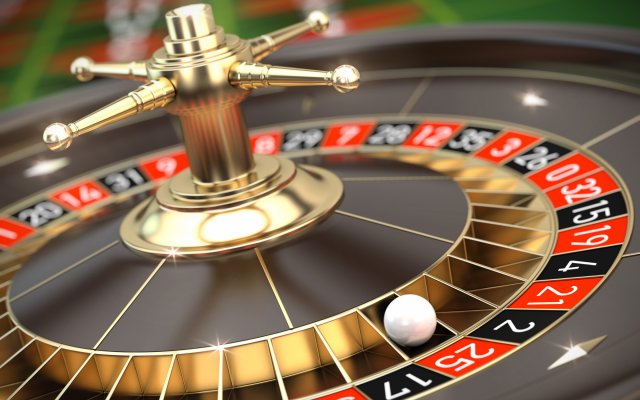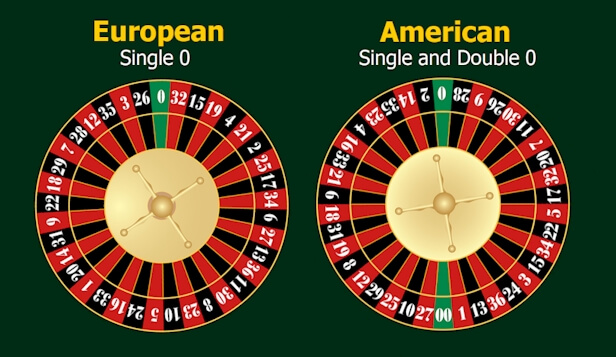|
|
 |
 |
| |
 |
| Though at first
sight its large board with multiple betting options might seem somewhat
intimidating and complex to a first timer, Roulette is one of the easiest
popular casino games to learn and play. Before we get into
advanced strategy that will allow you to
impress your friends with your skills at the table, let’s first get into
the basics of the game and how it is played. |
| |
 |
| |
| Image Source Originating in
France in the 18th century, Roulette – French for “little wheel”
- has since remained one of the most popular casino games in the
world. |
| |
Getting
Started
As you no doubt have seen in TV and movies, including the 1942
absolute classic ‘Casablanca’, Roulette has been one of the most popular
mainstays of casinos across history. The game is played by placing bets on a
board of numbers. Once all bets are placed, the croupier – also known as
dealer – will close off the betting period and spin a small metal ball
around the rim of a wheel while the carousel below it turns in the opposite
direction. As the ball slows down it will fall into the carousel, which is
commonly divided into slots labeled with numbers from 0 to 36, colored either
red or black. Whichever numbered slot the ball eventually stops in will be the
winning number. If you had placed a bet related to that number, you
win!
Simple, right? But before you rush off looking for your nearest
casino to put your skills to test, there’s still plenty for you to learn
so stick around!
Variations of Roulette
Before we go into the
types of bets you can make in Roulette, let’s first go over the
differences between the types of Roulette tables you will encounter. The two
main variations of Roulettes are the American and the European. While they
might seem quite similar to the inexperienced player, the truth is one of them
has considerably superior odds for bettors, making it quite important to be
able to tell them apart. |
| |
 |
| |
| Image Source
Unhappy with how little the house edge was in
Roulette, American casinos added a Double 0 to the wheel. The American
variation has since been introduced in all parts of the world. |
| |
European
European
Roulette is the most popular type of roulette in the world, and one of the
oldest games still played in casinos today. Its carousel boasts 37 slots,
numbered from 0 to 36. The ‘0’ is the only slot that is colored
green, rather than red or black, and that does not belong to a particular
column. This means that if the ball lands on ‘0’, players will lose
their bets to the house. It’s the existence of this ‘0’ that
gives the house a slight edge over players.
American
Unlike
its European counterpart, American Roulette has 38 numbered slots in its
carousel, adding an additional green slot: “00”. Just like the
‘0’ in European Roulette, the ball landing on ‘00’ will
lose you all your bets, doubling the advantage that the house has over the
players. Therefore it is always recommended that you find a European Roulette
to play in whenever possible, as it will give you more of an opportunity to win
– particularly if you are just starting out!
Visit our
House Edge page for more figures on
the casino advantage for each game.
Placing your bets |
| |
 |
| |
| Image Source A typical
board for European Roulette |
| |
Now that we know how
the winning bet is determined and the different types of Roulette you will
find, let’s go ahead and dive into all the different variety of bets you
can make on the board before the croupier spins that wheel. We will base the
odds and gameplay on the European version of Roulette, as it will be the most
profitable in the long run. Bets are normally divided into two categories:
“Inside” bets and “Outside” bets.
Inside
Bets:
As its name would indicate, inside bets are those placed on the
inner part of the board: The numbers themselves. These will give you the
biggest payouts in the game, though they are harder to hit.
Numbers - Betting directly on a number is also called
a straight-up bet. To bet on a specific number, place your chip(s)
directly on top of your desired number. While the odds of the ball landing
on the number you chose are not great, if lady luck is on your side and your
number hits you will be paid an astonishing 35 to 1, meaning you will get
£35 for every pound you bet.
Splits - By placing chips on
the line between any two numbers, bets can be split into two. This will
result in a winning bet if the ball lands on either of the two numbers, paying
out 17 to 1 – essentially halving the payout of betting a single number,
while giving you twice the chance to win.
Corners - Much
like splits, placing a chip on the corner of four numbers will split your wager
into 4, paying out at odds of 8 to 1 if any of the numbers lands. This is
also effectively the same odds as playing each single number. - Much like
splits, placing a chip on the corner of four numbers will split your wager into
4, paying out at odds of 8 to 1 if any of the numbers lands. This is also
effectively the same odds as playing each single number.
Streets - Another popular wager is to place a bet on an
entire row of numbers (Ex. 1, 2, 3 or 25, 26, 27), commonly referred to as a
Street. To bet a street place your chip(s) on the left border line of the left
number. Streets pay out odds of 11 to 1.
Six-Lines – The equivalent of betting two streets at
once, betting six-lines allows you to bet on sets of six contiguous numbers at
once (Ex. 31,32,33 & 34,35,36). To place a six-line bet, place your
chip(s) on the corner of the left border line between the two streets (Between
31 and 34 in the example above). Betting Six-lines pays out odds of 5 to
1.
Six-Lines – The equivalent of betting two streets at
once, betting six-lines allows you to bet on sets of six contiguous numbers at
once (Ex. 31,32,33 & 34,35,36). To place a six-line bet, place your
chip(s) on the corner of the left border line between the two streets (Between
31 and 34 in the example above). Betting Six-lines pays out odds of 5 to
1.
Outside Bets:
Outside bets, found on the outer part of the
board, group multiple numbers together providing much larger coverage on the
board, at the cost of smaller payouts. Betting on outside bets normally incurs
in less risk and is a safer strategy for those starting out.
Even
Chance bets – Placing a bet on the ball falling on a Red/ Black
number, on the number being Odd/Even, or being Low (1-18)/High (19-36) are
all even chance bets. This means that winning bets will pay you 1 to
1, a profit equivalent to your bet amount.
Columns - At the
far right of the board, you will find the option to bet on all the numbers of a
particular column. If a number contained in your column comes up, you are paid
at odds of 2 to 1 – twice as much as you bet.
Dozens
– Betting on dozens splits the board into 3. Numbers from 1 to 12 are in
the 1st Dozen, 13 to 24 in the 2nd and 25 to 36 in the 3rd. Like columns, bets
on dozens will also pay up at odds of 2 to 1.
Playing for the first
time
Now that you understand the basic functioning and types of bets you
can make in Roulette it’s time to put your new skills to test. If you are
planning to go to a land based casino, we recommend you first watch others
playing for a while before you join in, to make sure you understand the dynamic
and table
etiquette. You can also practice for free by signing up to an online casino
and playing for fun until you feel you’re ready to give it a spin.
|
| |
 |
| |
| |
|
| |
|
|
 |
|
 |